
Shocks, Crises, and False Alarms: How to Assess True Macroeconomic Risk
by
Philipp Carlsson-Szlezak
and
Paul Swartz
Published 8 Jul 2024
Far from preaching infallible predictive models, it approaches the world’s complexity with refreshing humility, busting plenty of doom-mongering myths along the way and offering a framework to ground decision-making in sound judgment.” —ALEX DRUMMOND, Chief Strategy Officer, American Express “Tailored to executives, this excellent book serves as a compass for navigating economic, financial, and geopolitical risk, emphasizing the enduring importance of judgment over prediction. A must-read for those seeking a nuanced understanding of macroeconomics and a guide for leaders shaping strategies in an unpredictable world.” —HON. BILL MORNEAU, former Minister of Finance, Canada “A great book that helps business leaders interpret macroeconomic risks and derive implications for their businesses.
…
Are we exiting the essentially benign macro backdrop against which a generation of leaders built their careers? Following a deeper discussion of how to analyze risk in chapter 2, this book breaks the question into three interacting components: the real economy (risks to growth), the financial economy (financial risks), and the global economy (geopolitical risks). Parts 1, 2, and 3 reflect this three-way partition of the risk landscape. In each part we deconstruct the three components further into discrete risk topics, each chapter tackling one. There are 18 topics in all. Readers can traverse the landscape of macro risk sequentially—seeing how we build up the map—or they can choose to jump around.
…
We then proceed to distinguish between structural breakdowns and cyclical surges of inflation (chapters 12 and 13) and round out the financial-risk debate by looking at three consequences of our earlier analysis: higher interest rates (chapter 14), debt sustainability (chapter 15), and the risk posed by bubbles (chapter 16). In part 3, “Global Economy: From Convergence Boom to Divergence Gloom,” we trace the rise and fall of the convergence bubble of the past 30 years (chapter 17) and analyze why geopolitical risk rarely translates linearly into macroeconomic impact and how to approach this challenge (chapter 18). We then consider the economic impact of changing trade patterns (chapter 19). Last, we explain why we consider predictions of the end of the dollar’s status as the global reserve currency a classic example of a false alarm (chapter 20)
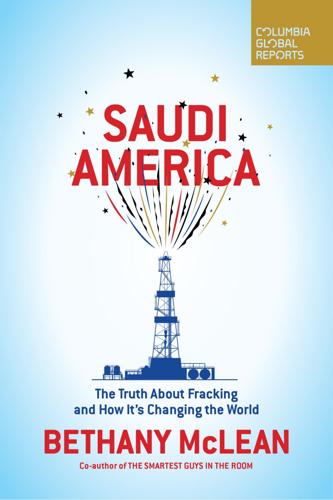
Saudi America: The Truth About Fracking and How It's Changing the World
by
Bethany McLean
Published 10 Sep 2018
By the fall of 2015, a year after OPEC’s surprise Thanksgiving decision to maintain production levels, Venezuela was warning of a “catastrophe” if the cartel didn’t cut and prop up prices. “OPEC has never been more divided,” a longtime oil analyst named Fadel Gheit told CNNMoney. “When prices move by $40 a barrel, stuff in the world starts breaking,” one oil man says. “Oil remains the world’s most efficient mechanism for translating economic into geopolitical risk,” wrote three authors in a lengthy piece called “Fueling a New Order? The New Geopolitical and Security Consequences of Energy,” which was published in 2014 by the Project on International Order and Strategy at Brookings. “In the modern era, no other commodity has played such a pivotal role in driving political and economic turmoil, and there is every reason to expect this to continue.”
…
CHAPTER NINE 9890 percent of its government revenue: “Saudi Arabia Beyond Oil: The Investment and Productivity Transformation,” McKinsey Global Institute, December 2015. 100long ruled by aging kings: “A Saudi Prince’s Quest to Remake the Middle East,” Dexter Filkins, The New Yorker, April 9, 2018. 102anonymous and acerbic commentators: “As The Saudi Economy Implodes, a Fascinating Solution Emerges: The Aramco IPO,” Tyler Durden, Zero Hedge, January 7, 2016. 102translating economic into geopolitical risk: “Fueling a New Order? The New Geopolitical and Security Consequences of Energy,” Bruce Jones, David Steven, and Emily O’Brien, Brookings Institution, April 15, 2014. CHAPTER TEN 105crushing blow to imports: “Nigeria Bearing Brunt of U.S. Shale-Oil Boom,” Sarah Kent, The Wall Street Journal, March 6, 2013. 111swords, daggers, and cheetah fur robes: “The Insane Gifts Saudi Arabia Gave President Trump,” Ken Klippenstein, The Daily Beast, September 4, 2017. 110Asian states heavily dependent on Gulf petroleum: “President Trump’s Trip to Saudi Arabia,” Anthony H.
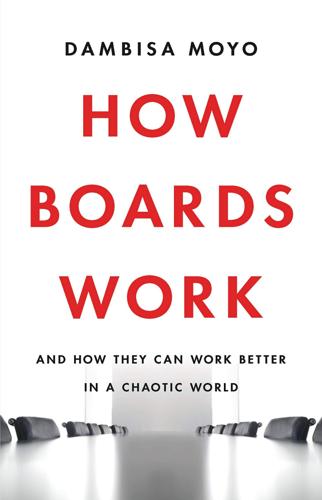
How Boards Work: And How They Can Work Better in a Chaotic World
by
Dambisa Moyo
Published 3 May 2021
Increasingly, a board is tasked with ensuring that its organization represents and reflects the fact that its customers, clients, and regulators are changing. A range of headwinds have arisen to make board responsibilities more complicated and the board’s role more complex. In the coming years, boards will face the challenges of providing oversight amid exponential technological change; rising activism by ever more powerful investors; mounting geopolitical risks that are trending toward insularity, protectionism, and de-globalization; and a war for global talent. Chapter 4 explores each of these critical issues and how short-term thinking alters boardroom decision-making on strategy and investment. It examines how myopia can exacerbate many of the risks that boards face, which can further hamper their choices.
…
Global economic and political shifts demand that boards place an even greater premium on the type of experience and knowledge that has traditionally belonged to those working in public policy—including an understanding of areas such as human rights, social contracts, and the vested interests of domestic politicians. Shifts in the global policy regime could scupper board and management plans and even force multinational corporations to scale back and sell parts of their international operations. Boards of global corporations are already contending with a host of geopolitical risks. These include challenges to the efficacy of multilateral institutions such as the International Monetary Fund (IMF) and World Trade Organization (WTO), which have governed the global system and brought stability over the past fifty years. Rising trade protectionism and mounting regulatory requirements are affecting all manner of industries and sectors, including banking, food, and technology.
…
Global economic growth forecasts were meaningfully reduced, and financial regulators responded by loosening the stress tests on banks, thereby enabling them to inject greater liquidity into the economy and avoiding the dire scenario that Dimon had foreshadowed. Greater economic protectionism and mounting geopolitical risks affect where and how companies can successfully and competitively sell across borders. Boards need to make sure they have the talent and skills to understand how management should navigate and mitigate these risks. For instance, a board member with a strong financial background can help a company think through how to use financial-market tools to hedge against emerging risks and make the best possible investment decisions.
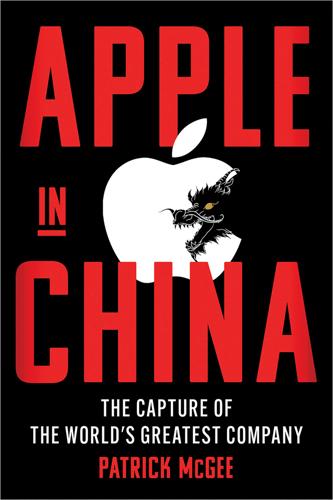
Apple in China: The Capture of the World's Greatest Company
by
Patrick McGee
Published 13 May 2025
From Cupertino’s perspective, it was a shrewd move that aided Samsung’s biggest competitor and helped to ensure the iPhone had a computing edge over its biggest rivals. But since Taiwan is considered a rogue region that could eventually be reincorporated into China, possibly by force, the shift doubled Apple’s exposure to the geopolitical risk of a more belligerent Beijing. iSad Steven Paul Jobs died on October 5, 2011, aged fifty-six, leaving behind a company worth $350 billion and a trusted lieutenant, Tim Cook, to manage it. Millions of people mourned, often leaving bitten apples at the company’s stores or holding up digital flickering candles on their iPads.
…
Several people say the jury is still out on whether she can lead a major shift from China to India. The implication: If the skill set needed is brute force and sixteen-hour days, then Priya—as everyone at Apple calls her—is great for the role; if it requires fundamentally rethinking things, she might not be. India, a democracy with English as a second official language, offers fewer geopolitical risks than China and, with its rising middle class, could become a huge market in the coming decades. As an internal memo prepared for Tim Cook in October 2018 put it: India is poised for a “China-like trajectory.” The memo compared India’s economy to China’s in 2008, cited projections that GDP would grow 7 percent a year for the next five years, and referenced an estimate from McKinsey, the consultancy, saying “India’s ‘consuming class’ is expected to almost triple to ~90M households by 2025.”
…
Today the main “system on a chip” in every iPhone, iPad, MacBook, desktop Mac, AirPod, and Apple Watch is being made on one small island. That concentration of risk would be extraordinary in any environment, but it’s especially troubling given China’s authoritarian turn. To be clear, Taiwan is not itself a geopolitical risk; it’s a thriving democracy and strong ally of the United States. But Xi Jinping has repeatedly threatened the country with war, calling for “reunification” and pledging to “resolve” the Taiwan question “in this generation.” The message has felt more ominous since 2019, as Beijing crushed Hong Kong’s autonomy and then jailed pro-democracy activists.

The Great Disruption: Why the Climate Crisis Will Bring on the End of Shopping and the Birth of a New World
by
Paul Gilding
Published 28 Mar 2011
There is further reinforcing logic at a system design level for solar and wind power. The fuel cost for generation is zero and the energy is available all over the planet, meaning all those imports and impacts on balance of payments are gone. This global energy security also largely eliminates a whole range of related geopolitical risks and the resulting military threats and instability, not to mention the enormous costs involved. The savings on offer are tangible and we don’t have to look hard to find real numbers. A fascinating peer reviewed study reported in the journal Foreign Policy pointed out that keeping aircraft carriers in the Persian Gulf from 1976 to 2007 cost over $7 trillion.
…
All it would take would be a terrorist attack on fuel depots, a peak oil price panic, or a pandemic keeping drivers at home, and chaos could erupt very quickly, with enormous social and political consequences. This system is already tightly wound and highly stressed. Climate change is only increasing the pressure, making the global geopolitical risks even greater. We can expect major issues in India and China because, already struggling under the impacts of environmental degradation, the water supplies that feed their agriculture are being threatened by over use, magnified by climate-related shifts. Serious food shortages affecting this region of two billion people could soon lead to widespread geopolitical, economic, and social consequences, with resulting refugees and social and security instability.
…
David MacKay, Sustainable Energy Without the Hot Air (Cambridge, England: UIT Cambridge, 2009) This excellent overview of low carbon energy pathways in response to the climate challenge can be downloaded for free or purchased on paper at www .withouthotair.com. Gwynne Dyer, Climate Wars: The Fight for Survival as the World Overheats (Toronto: Random House Canada, 2008). An overview of future geopolitical risks and conflict scenarios viewed through the lens of climate change and sustainability. Richard Wilkinson and Kate Pickett, The Spirit Level: Why Greater Equality Makes Societies Stronger (New York: Bloomsbury Press, 2010). A fuller explanation of the issues covered in the chapter on inequality.
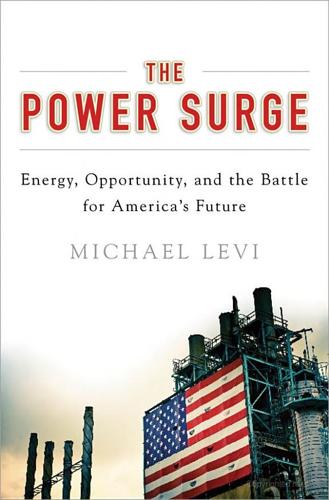
The Power Surge: Energy, Opportunity, and the Battle for America's Future
by
Michael Levi
Published 28 Apr 2013
We know many things well: natural gas is far more abundant than most people recently assumed, U.S. oil output has the potential to grow considerably, efficient cars are becoming more affordable every year, and the cost of alternative energy, even though still higher than that of fossil fuels, is on the decline. We also know that high and volatile oil prices 200 • THE POWER SURGE hurt the U.S. economy, fossil-fuel emissions increase the likelihood of dangerous climate change, and domestic gas has spared the country some geopolitical risks. But there is a lot we don’t know with anything close to high precision. We can’t say with enormous confidence how much oil or gas the United States will produce, how much it will cost to extract, or how welcoming affected communities will be. We can’t firmly predict the costs of increasing the efficiency of U.S. cars and trucks, and we certainly don’t know when electric vehicles will become a big commercial prospect.
…
After nearly four decades of hard work, economists still can’t agree on whether spiking oil prices cause recessions, but they definitely can’t rule out the possibility that they do. National security strategists can’t agree on whether dependence on natural gas imports would expose the country to big geopolitical risks, but few are anywhere close to dismissing the link. Scientists can’t pin down just how bad every ton of greenhouse gas emissions will be for climate change, but most agree that the damages could be very large. Indeed, the unknowns of the energy world are almost always its most troubling elements.

MegaThreats: Ten Dangerous Trends That Imperil Our Future, and How to Survive Them
by
Nouriel Roubini
Published 17 Oct 2022
There are plenty of candidates: a massive market bubble bursting as in 1929; a surge in inflation forcing central banks to tighten monetary policy in a draconian way, leading to an unsustainable rise in interest rates; pandemics worse than COVID-19 as zoonotic diseases transmitted from animals to humans become more frequent and virulent; a corporate debt crisis stemming from a credit crunch as interest rates rise; a new housing bubble and then bust clobbering homeowners and lenders; a geopolitical shock like the war between Russia and Ukraine in 2022 escalating and becoming more severe, leading to further spikes in commodity prices and inflation; other geopolitical risks; and the rising risk of another global recession triggered by the confluence of the above risks. Alternatively, we might see a return to protectionism or a decoupling between the United States and China as the two countries careen toward a geopolitical collision. Italy could eventually go bankrupt and start the collapse of the eurozone.
…
The first is to invest in inflation-indexed bonds or in short-term government bonds whose yields reprice rapidly in response to higher inflation. The second option is to invest in gold, other precious metals and possibly other commodities whose prices tend to rise when inflation is higher (gold is also a good hedge against the kinds of political and geopolitical risks that may hit the world in the next few years).17 Lastly, one can invest in real assets with a relatively limited supply, such as land, commercial and residential real estate, and infrastructure. But given global climate change, any investments in real estate should be directed to the regions of the United States and the world that are resilient, i.e. regions that will not be flooded by rising sea levels, hurricanes, and typhoons, and regions that are not too hot to become unlivable.
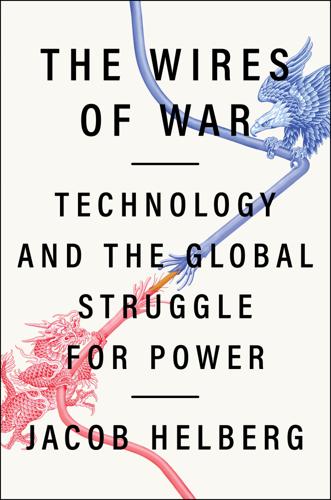
The Wires of War: Technology and the Global Struggle for Power
by
Jacob Helberg
Published 11 Oct 2021
Medical hardware is (understandably) a tightly regulated space, and at that time investors didn’t have much appetite for clinical trials and a lengthy, onerous, and uncertain FDA approval process. After about a year, we closed up. Along with a few colleagues, I decided to give start-ups another try, this time seizing on an opportunity closer to my passion for geopolitics. We called it GeoQuant, and the idea was to use software to measure geopolitical risk. SwissRe, the world’s largest reinsurer, thought the technology was promising and invested. Our clients were Fortune 500 companies weighing the hazards of setting up operations in volatile countries. Typically, they’d bring on consultants with the usual backgrounds from the State or Defense Departments or the intelligence community.
…
Reaching under the couch to retrieve it, Keith found a box I’d hidden. The box appeared to be cuff links for his birthday, but when he opened it, inside was a ring. The following year, we were married in a beachside ceremony, with the setting sun reflecting off the water. Last Days of Innocence Throughout much of 2016, I was working to quantify geopolitical risk. GeoQuant promised to take high-quality big data, run it through a powerful “machine learning engine,” supplement those assessments with input from human experts, and generate objective, actionable measurements of political risk. Exciting, right? Our algorithms tracked a variety of factors, such as instability in the governing coalitions of G20 nations, declines in the price of oil, and rate cuts by the Federal Reserve.

Capitalism 4.0: The Birth of a New Economy in the Aftermath of Crisis
by
Anatole Kaletsky
Published 22 Jun 2010
In the short term, the surge in oil prices to $150 in the summer of 2008 contributed to the financial breakdown and the recession—and the fear that oil prices could return to these levels is a major threat to global economic recovery in 2010 and beyond. In the very long-term, oil is a limited resource, as is the atmosphere’s capacity for absorbing carbon. And in the middle-distance time horizon, the immense transfer of global resources to politically unstable oil-producing countries creates huge geopolitical risks. Why, then, has the United States in particular, and the Western world in general, done so little to reduce its dependence on oil? The answer is quite simply that oil, even at $100 a barrel, is a cheaper source of energy than any existing alternative.10 In the mindset of Capitalism 3.3, this is the end of the matter: Whatever source of energy is cheapest is the one that should be used.
…
The point of political intervention will be to bring about a different kind of equilibrium in the oil market to achieve three different objectives that financial markets, acting on their own, could not even be expected to recognize. The first objective will be to balance oil supply and demand in a way that does not inflict unnecessary damage on economic activity and living standards in oil-consuming countries. The second objective will be to avoid the geopolitical risks to Western democracy of allowing a return to the $150 free-market oil price, which resulted in a windfall of some $1 trillion annually to some of the world’s most unstable, undemocratic, and politically hostile regimes.19 The third will be to combine the rebalancing of supply and demand with environmental imperatives.
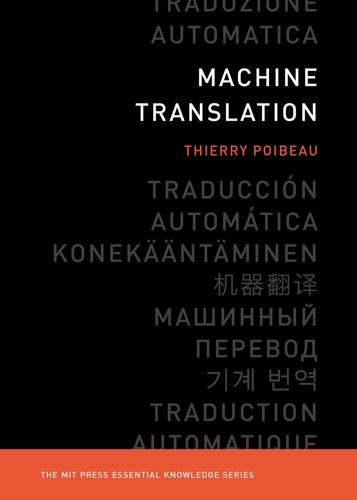
Machine Translation
by
Thierry Poibeau
Published 14 Sep 2017
A Current Challenge: The Rapid Development of Translation Systems for New Language Pairs Here we must say a few words on one of the current challenges in the field of machine translation: the rapid development of translation systems for languages that have not been covered up to now. This concerns mainly the defense and intelligence industry; surveillance and intelligence needs evolve rapidly depending on geopolitical risks (see chapter 14, dedicated to the machine translation market). From a technical point of view, the challenge is to collect bilingual corpora very quickly for the languages considered. While automatic corpus collection is a well-known technique nowadays (see chapter 7), the volume of data collected is often insufficient in practice to develop operational machine translation systems.

The Only Game in Town: Central Banks, Instability, and Avoiding the Next Collapse
by
Mohamed A. El-Erian
Published 26 Jan 2016
Even the violence in eastern Ukraine involves nonstate actors. Yes, they are influenced by Moscow, but it is not clear that the Kremlin can decisively impose its will on them at all times. Again, it is hard to argue that markets have priced in the scale and scope of possible disruptions that come with this unfortunate combination of geopolitical risks. And, again, the reason for this is a conditioned rational one that includes enormous faith in the power of central banks to insulate markets, together with excitement about the cash sitting on corporate balance sheets. But should these influences wane, as they are bound to in the future, markets will have to play rapid catch-up with quite an uncertain and worrisome geopolitical configuration.
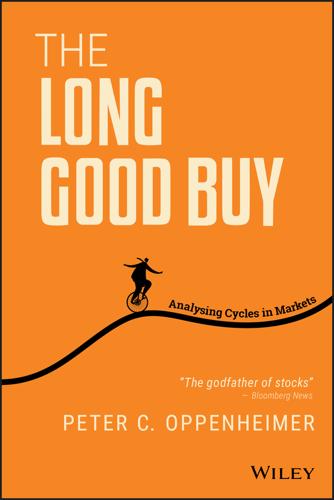
The Long Good Buy: Analysing Cycles in Markets
by
Peter Oppenheimer
Published 3 May 2020
In 1985, during my first year at work, the Dow Jones stock index in the US rallied by just over 27%, the strongest single year since 1975 (the year of recovery from the crash that followed the oil crisis and deep recession of 1973/1974). Rising prices reflected both improving fundamentals and a fall in uncertainty and geopolitical risk. Low inflation and interest rates led to a growing belief that, after a period of strong growth, the major economies could achieve a ‘soft landing’ – avoiding a recession and enjoying an extended economic expansion. The fall of communism and the ‘peace dividend’ that followed, together with the expansion of liberal capitalism, enabled risk premia to fall.

Four Battlegrounds
by
Paul Scharre
Published 18 Jan 2023
Manipulated media has already become a flashpoint in U.S. politics, with crudely manipulated videos of House Speaker Nancy Pelosi or White House press correspondent Jim Acosta making the rounds on social media. These “shallow fakes” were manipulated without AI, but AI-based synthetic media will enable more sophisticated fake audio and video, making it harder for people to know what is real and what is fake. The geopolitical risks from deepfakes extend beyond manipulating elections. Fake audio or video could be used to manufacture a political crisis, undermine relations between allies, or inflame geopolitical tensions. Even a fake that was eventually exposed as fraudulent could be damaging if it caused doubt for a period of time.
…
Able Archer, 287 academic espionage, 163–64 accidents, 255 ACE (Air Combat Evolution), 1–2, 222 ACLU (American Civil Liberties Union), 111, 113 Acosta, Jim, 128 Advanced Research Projects Agency, 72 Advanced Research Projects Agency-Energy, 40 adversarial examples, 239–44, 240f adversarial patches, 241–42, 242f Aether Committee, 159 Afghanistan, 45–46, 54, 255 African Union, 108 AFWERX (Air Force Works), 214 Agence France-Presse, 139 AGI (artificial general intelligence), 284 AI Global Surveillance Index, 109 AI Index, 333–34 airborne warning and control system (AWACS), 196 Air Combat Evolution (ACE), 1–2, 222 aircraft, 191, 255 aircraft availability rates, 197 aircraft carriers, 191–92 AI Research SuperCluster, 296 Air Force 480th ISR Wing, 54 Air Force Works (AFWERX), 214 airlines, 100 AI Task Force, 193–94 AI Technology and Governance conference, 177 AITHOS coalition, 136 alchemy, 232 algorithmic warfare, 53, 56, 58 Algorithmic Warfare Cross-Functional Team (AWCFT), See Project Maven algorithm(s), 288; See also machine learning computer vision, 202–3 efficiency, 51, 297–98 real world situations, vs., 230–36 in social media, 144–51 for surveillance, 82 training, 25 Alibaba, 37, 91, 212 Alibaba Cloud, 160 All-Cloud Smart Video Cloud Solution, 107 Allen, John, 280 Allen-Ebrahimian, Bethany, 82 Alphabet, 26, 296 AlphaDogfight, 1–3, 220–22, 257, 266, 272 AlphaGo, 23, 73, 180, 221, 266, 271, 274, 284, 298, 453, 454 AlphaPilot drone racing, 229–30, 250 AlphaStar, 180, 221, 269, 271, 441 AlphaZero, 267, 269–71, 284 Amazon, 32, 36, 215–16, 224 Deepfake Detection Challenge, 132 and facial recognition, 22–23 and Google-Maven controversy, 62, 66 and government regulation, 111 revenue, 297 AMD (company), 28 American Civil Liberties Union (ACLU), 111, 113 Anandkumar, Anima, 32, 120 Anduril, 66, 218, 224 Angola, 107, 108 Apollo Program, 297 Apple, 92, 95–96 application-specific integrated circuits (ASICs), 180 Applied Intuition, 224 arms race, 254, 257 Army Command College, 279 Army of None (Scharre), 196 artificial general intelligence (AGI), 284 artificial intelligence (AI) agents, 271 community, publication norms, 125 cost of, 296–97 ethics, 159 future of, 294–301 general, 284 as general-purpose enabling technology, 3–4 impact on economic productivity, 72–73 implementation, 31 indices, global, 15–17 narrowness, 233 outcomes, 299–301 regulation of, 111–13 safety, 286, 289, 304 specialized chips for, 28–29, 180, 185 “Artificial intelligence: disruptively changing the ‘rules of the game’” (Chen), 279 Artificial Intelligence Industry Alliance, 172 artificial intelligence (AI) systems future of, 294–301 humans vs., 263–75 limitations of, 229–37 roles in warfare, 273 rule-based, 230, 236 safety and security challenges of, 249–59 arXiv, 163 ASICs (application-specific integrated circuits), 180 ASML (company), 181 Associated Press, 139 Atari, 235 Atlantic, The, 173 atoms, in the universe, number of, 335 AUKUS partnership, 76 Austin, Lloyd, 292 Australia, 76, 108, 158, 182, 187 Australian Strategic Policy Institute, 82, 98, 158 Autodesk, 162 automated surveillance, 103 automatic target recognition, 56–58 automation bias, 263 autonomous cars, 23, 65 autonomous weapons, 61, 64–66, 256 autonomous weapons, lethal, 286 AWACS (airborne warning and control system), 196 AWCFT (Algorithmic Warfare Cross-Functional Team), See Project Maven Azerbaijan, 108 BAAI (Beijing Academy of Artificial Intelligence), 172, 455 backdoor poisoning attacks, 245 badnets, 246 BAE (company), 211 Baidu, 37, 92, 160, 172, 173, 212 Baise Executive Leadership Academy, 109 “Banger” (call sign), 1 Bannon, Steve, 295 Battle of Omdurman, 13 BBC, 138 BeiDou, 80 Beijing, 84, 92, 159 Beijing Academy of Artificial Intelligence (BAAI), 172, 455 Beijing AI Principles, 172, 173 Beijing Institute of Big Data Research, 157 Belt and Road Initiative, 105, 108–10 BERTLARGE, 294 Betaworks, 127–28 Bezos, Jeff, 215 biases, 234, 236 Biddle, Stephen, 219 Biden, Hunter, 131 Biden, Joe, and administration, 33–34, 147, 166–67, 184, 252, 292 big data analysis, 91 Bing, 160 Bin Salman, Mohammed, 141 biometrics, 80, 84; See also facial recognition “Bitter Lesson, The” (Sutton), 299 black box attacks, 240–41 blacklists, 99–100 BlackLivesMatter, 143, 148 “blade runner” laws, 121–22, 170 blind passes, 249 Bloomberg, 118 Bloomberg Government, 257 Boeing, 193, 216 Bolivia, 107 bots, 118, 121–22, 142, 144–49, 221 Bradford, Anu, 112 Bradshaw, Samantha, 141–42 brain drain, 31, 304 “brain scale” models, 300 Brands, Hal, 223 Brazil, 106, 107, 110 Breakfast Club, 53 Brexit referendum, 122 Bridges Supercomputer, 44 brinkmanship, 281 Brokaw, Tom, 143 Brooks, Rodney, 233 “brothers and sisters,” Han Chinese, 81 Brown, Jason, 54–55, 57, 201–3 Brown, Michael, 49, 196–97 Brown, Noam, 44, 48, 50 Bugs Bunny (fictional character), 231 Bureau of Industry and Security, 166 Burundi, 110 Buscemi, Steve, 130 Bush, George W., and administration, 68–70 ByteDance, 143 C3 AI, 196, 224 C4ISR (Command, Control, Communication, Cloud, Intelligence, Surveillance, and Reconnaissance), 107 CalFire, 201–2 California Air National Guard, 201, 203 Caltech, 32, 120 Cambridge Innovation Center, 135 cameras, surveillance, 6, 86–87, 91 Campbell, Kurt, 292 Canada, 40, 76, 158, 187 Capitol insurrection of 2021, 150 car bombs, 54–55 Carnegie Mellon University, 31–32, 45–46, 66, 193, 196, 207 Carnegie Robotics, 193 cars, self-driving, 23 Carter, Ash, 57 casualties, military, 255 CBC/Radio-Canada, 138 CCP, See Chinese Communist Party Ceaușescu, Nicolae, 345 CEIEC (China National Electronics Import and Export Corporation), 106 censorship, 175–76 centaur model, 263 Center for a New American Security, 36, 71, 222 Center for Data Innovation, 15 Center for Security and Emerging Technology, 33, 139, 162, 185, 298, 323 Center on Terrorism, Extremism, and Counterterrorism, 124 Central Military Commission, 292 Central Military Commission Science and Technology Commission, 36 central processing units (CPUs), 25 CFIUS (Committee on Foreign Investment in the United States), 179 C-5 cargo plane, 196 chance, 282 character of warfare, 280 checkers, 47 Chen Hanghui, 279 Chen Weiss, Jessica, 110 Chesney, Robert, 130 chess, 47, 267, 269, 271, 275 Chile, 107 China AI research of, 30 bots, 142 Central Military Commission Science and Technology Commission, 36 commercial tech ecosystem, 223 data privacy regulations of, 21–22 ethics standards, 171–75 High-End Foreign Expert Recruitment Program, 33 human rights abuses, 63 in industrial revolution, 12–13 internet use, 22 nuclear capabilities, 50 ranking in government strategy, 40 semiconductor imports, 29 synthetic media policies of, 140 technology ecosystem, 91–96 Thousand Talents Plan, 32 China Arms Control and Disarmament Association, 290 China Initiative, 164, 167 China National Electronics Import and Export Corporation (CEIEC), 106 China National Intellectual Property Administration (CNIPA), 353 China Security and Protection Industry Association, 91 China Telecom, 169 Chinese Academy of Sciences, 88, 158 Chinese Academy of Sciences Institute of Automation, 172 Chinese Communist Party (CCP) economic history, 85–86 human rights abuses, 79–80, 83 surveillance, 97–104, 174–77 Chinese graduate students in U.S., 31 Chinese military aggression, 76; See also People’s Liberation Army (PLA) AI dogfighting system, 257 and Google, 62–63 investments in weapons, 70 scientists in U.S., 5 and Tiananmen massacre, 68 U.S. links to, 157–58, 161, 166, 303 Chinese Ministry of Education, 162 Chinese People’s Institute of Foreign Affairs, 173 Chinese Talent Program Tracker, 33 chips, See semiconductor industry; semiconductors CHIPS and Science Act, 40, 180 Cisco, 109, 246 Citron, Danielle, 121, 130 Civil Aviation Industry Credit Management Measures, 100 Clarifai, 60–61, 63, 66, 224 Clark, Jack, 31, 117, 119–25 Clinton, Bill, and administration, 69–70, 97 CLIP (multimodal model), 295–96 cloud computing, 91, 215–16 CloudWalk, 105, 156, 389 CNIPA (China National Intellectual Property Administration), 353 COBOL (programming language), 204 cognitive revolution, 4 cognitization of military forces, 265 Colombia, 107 Command, Control, Communication, Cloud, Intelligence, Surveillance, and Reconnaissance (C4ISR), 107 command and control, 268 Commerce Department, 155–57, 166, 171, 184 Committee on Foreign Investment in the United States (CFIUS), 179 computational efficiency, 297–300 computational game theory, 47–50 compute, 25–29 control over, 27 global infrastructure, 178 hardware, 297–99 resources, size of, 294–96 trends in, 325 usage of, 26, 51 computer chips, See semiconductor industry; semiconductors Computer Science and Artificial Intelligence Laboratory (CSAIL), 156 computer vision, 55–57, 64, 224 Computer Vision and Pattern Recognition conference, 57 concentration camps, 81 confidence-building measures, 290–93 confinement, 82 content recommendations, 145 Cook, Matt, 203 cooperation, research, 303–4 Cornell University, 124 cost, of AI, 296–97 Côte d’Ivoire, 107 Cotton, Tom, 164 counter-AI techniques, 248 COVID pandemic, 74–75 CPUs (central processing units), 25 Crootof, Rebecca, 123 CrowdAI, 202, 224 CSAIL (Computer Science and Artificial Intelligence Laboratory), 156 Cukor, Drew, 57, 58–59 Customs and Border Patrol, 110–11 cyberattacks, 246 Cyber Grand Challenge, 195–96 Cybersecurity Law, 95, 174 “cyberspace,” 102 Cyberspace Administration of China, 99 cyber vulnerabilities, 238 adversarial examples, 239–44 data poisoning, 244–47 discovery, 195–96 model inversion attacks, 247 Czech Republic, 108 Dahua, 89, 156, 169, 353, 354–55, 388–89 Dalai Lama, 80 Dalian University of Technology, 212 DALL·E, 295 Darcey, Brett, 220, 249–50 DARPA (Defense Advanced Research Projects Agency), 1, 195, 210–13, 220 DARPA Squad X, 231, 233, 236 data, 18–24 explosion, 18–19 mapping, 204 open-source, 288 poisoning, 238, 244–47 privacy laws, 21–22, 111–12, 170–71, 174–77 storage, 91 usage, 51 Data Security Law, 95, 174 datasets publicly available, 139 reliance on, 323 training, see training datasets DAWNBench, 57 D-Day Invasion of Normandy, 46 dead hand, 289–90 Dead Hand, 447; See also Perimeter deception in warfare, 45 Deep Blue, 275 deepfake detection, 127, 132–33, 137–38 Deepfake Detection Challenge, 132–33 deepfake videos, 121, 130–32 deep learning, 2, 19, 31, 210, 236 Deep Learning Analytics, 209–13, 233 DeepMind, 23, 26, 32, 180, 221, 271–72, 295–96, 298–99, 441, 454 Deeptrace, 121, 130–33 defense acquisition policy, 217 Defense Advanced Research Projects Agency (DARPA), 1, 195, 210–13, 220 Defense Innovation Board, 65–66 Defense Innovation Unit (DIU), 35, 49, 57, 195–99, 214, 252 Defense One, 58 Defense Sciences Office, 231 defense start-ups, 222 Dell, 162 Deloitte, 246 Deng Xiaoping, 75, 85 Denmark, 108 Department of Defense, 35, 51–52, 56, 60–67, 70, 160, 166, 194 AI principles, 65–66 AI strategy, 249 budget, 297 contracts, 214–18 cyberattacks on, 246 innovation organizations, 198f reform, 225 Department of Energy, 246 Department of Energy’s Office of Science, 40 Department of Homeland Security, 246 Department of Justice, 164, 246 destruction, extinction-level, 282 deterrence, 51 DiCaprio, Leonardo, 130 Dick, Philip K., 81 dictator’s dilemma, 69 Didi, 92 digital devices, 18 DigitalGlobe, 204 Digital Silk Road, 110 DiResta, Renée, 139 disaster relief, 201, 204 disinformation, 117–26 AI text generation, 117–21 deepfake videos, 121 GPT-2 release, 123–24 Russian, 122 voice bots, 121–22 distributional shift, 233, 426 DIU, See Defense Innovation Unit (DIU) DNA database, 89–90 dogfighting, 1, 249–50, 272; See also Alpha Dogfight “Donald Trump neuron,” 295 Doom bots, 221 doomsday device, 282 Dota 2 (game), 26, 117, 267–72, 298 Dragonfly, 62 Drenkow, Nathan, 247 drone pilots, 223 drones, 229–30, 257, 286–87 drone video footage, 36, 53–56, 61, 65, 202–3; See also image processing; video processing drugs, 251 Dulles Airport, 110–11 Dunford, Joe, 62 Duplex, 121 Easley, Matt, 193 Eastern Foundry, 209 Economist, The, 18 Ecuador, 106 efficiency, algorithmic, 51 Egypt, 109 XVIII Airborne Corps at Fort Bragg, 194 elections, 122, 128, 129, 131, 134, 150 Elmer Fudd (fictional character), 231 Entity List, 155–57, 161, 163, 166–67, 171, 182, 184, 388–89 Environmental Protection Agency, 40 Erasmus University Medical Center, 158, 393–94 Esper, Mark, 67, 197, 205 espionage, 33, 163–64 Estonia, 108 “Ethical Norms for New Generation Artificial Intelligence,” 172 ethical use of technology, 140 ethics censorship, 175–76 Chinese standards, 171–75 data privacy, 176–77 international standards, 169–71 Ethiopia, 108 E-3 Sentry, 196 Europe AI research of, 30 in industrial revolution, 12–13 internet use, 22 and semiconductor market, 27 European Union, 76, 187 Europe Defender, 194 EUV (extreme ultraviolet lithography), 181 explainable AI, 237 export controls, 166–67, 181–86, 300 extinction-level destruction, 282 extreme ultraviolet lithography (EUV), 181 Eyes in the Sky (Michel), 54 F-35 stealth fighter jet, 254–55 Faber, Isaac, 193–94, 203 Face++, 88 Facebook account removal, 142 algorithms, 144–46 content moderation, 149 Deepfake Detection Challenge, 132 manipulated media policies of, 140 number of users, 22 and Trusted News Initiative, 139 face swapping, 121, 130–31 facial recognition attacks on, 241, 245 challenges in, 426 in China, 5–6, 80, 88–91, 103, 167 Chinese export of technology, 105–7 laws and policies for, 113, 159, 170 poor performance outside training data, 64–65 of Uighurs, 88–89, 158 in U.S., 22–23, 111, 159 fake news, 117–19, 122, 124–25 Falco (call sign), 1–2, 221, 226 Fan Hui, 298 FBI, 95–96, 164 Fedasiuk, Ryan, 162 Federal Emergency Management Agency (FEMA), 204 FedRAMP, 213 FEMA (Federal Emergency Management Agency), 204 Fidelity International, 157 field-programmable gate arrays (FPGAs), 180 “50 cent army,” 125 Fighting to Innovate (Kania), 222 filtering, of harmful content, 144 Financial Times, 157–58 Finland, 40, 187 fire perimeter mapping, 201–4 5G wireless networking, 37, 108, 182–83 Floyd, George, 143, 148 flu, H5N1 avian bird, 123 ForAllSecure, 196 Forbes magazine, 202 Ford, Harrison, 121 480th ISR Wing, 54 FPGAs (field-programmable gate arrays), 180 France, 40, 76, 108, 158, 187 Frazier, Darnella, 143 Frederick, Kara, 105 French Presidential election, 2017, 122 future, uncertainty of, 276 G7 group, 76, 187 Gab, 149 Gabon, 134 Gadot, Gal, 121 Game Changer, 206 games and gaming, 43–51, 266–73; See also specific games game trees, 47–49 GANs (generative adversarial networks), 127, 133 GAO, See Government Accountability Office (GAO) Garcia, Dominic, 203 Gates, Bill, 159 Gato, 295 GDP (gross domestic product), 69f, 85, 85f GDPR, See General Data Protection Regulation (GDPR) General Dynamics, 209, 212–13 generative adversarial networks (GANs), 127, 133 generative models, 125 genomics, 37 geopolitics, 129, 317 Germany, 12, 76, 107, 108, 158, 187 Gibson, John, 61 Gibson, William, 101, 102 Gizmodo, 120 Global AI Index, 15, 40 Global AI Vibrancy Tool, 319 go (game), 23, 47–48, 73, 180, 271, 275, 298 Golden Shield Project, 87 Goodfellow, Ian, 239 Google, 31, 32, 36, 57, 224, 294 and ASICs, 180 and Dragonfly, 339 Duplex, 121 Meena, 125 and Seven Sons of National Defense, 162 social app dominance, 143 and Trusted News Initiative, 139 work with Chinese researchers, 157, 392, 396 Google AI China Center, 62, 159, 167 Google Brain, 32, 294–96, 299 Google-Maven controversy, 22, 60–67 Google Photos, 64 Googleplex, 195 Google Translate, 234 Gorgon Stare, 53–55, 58 “Governance Principles for a New Generation of Artificial Intelligence,” 173 “Governance Principles for a New Generation of Artificial Intelligence: Develop Responsible Artificial Intelligence,” 172 Government Accountability Office (GAO), 195, 215, 217, 248 government contracting, 215–16, 222, 224–25 government-industry relationship, 95–96 government subsidies, 179–80 GPT-2 (language model), 20, 117–20, 122–25, 139, 294 GPT-3 (language model), 139, 294 GPUs (graphics processing units), 25, 28–29, 185, 296 Grace, Katja, 298 Great Britain, 191–92 Great Firewall, 62, 70, 102, 166 Great Gatsby, The (film), 130 Great Leap Forward, 85 Great Wall, 101 Greitens, Sheena, 105 Griffin, Michael, 200, 257 Guardian, The, 120, 148 Gulf War, 1991, 14, 219 HA/DR (humanitarian assistance/disaster relief), 201, 204 Hamad Bin Khalifa University, 142 Han Chinese, 81, 88 Harbin Institute of Technology, 161 hardware, computing, See compute Harvard University, 32 hashtags, 141 Hate Crimes in Cyberspace (Citron), 121 Heinrich, Martin, 37 Heritage Foundation, 105 Heron Systems in AlphaDogfight Trials, 1–2, 266, 272 background, 220–22 as defense start-up, 224 and real-world aircraft, 249–50 heuristics, 274 Hewlett Packard Enterprise, 157, 392 Hicks, Kathleen, 252 High-End Foreign Expert Recruitment Program, 33 Hikvision, 89, 91, 107, 156, 157, 353, 355, 389, 390 Hikvision Europe, 389 Himalayan border conflict, 75 Hindu, The, 139 Hinton, Geoffrey, 210 HiSilicon, 91 Hoffman, Samantha, 82, 98–99, 101, 102, 174 HoloLens, 160, 217 Honeywell, 162 Hong Kong, 75, 148, 175 Hoover Institution, 162 Horner, Chuck, 14 Howard, Philip, 141–42 Howell, Chuck, 250–51 Huawei, 29, 76, 88–89, 91, 92, 106–9, 169, 171, 182–85, 353, 354, 357, 409 Huawei France, 354 Huffman, Carter, 135–37 human cognition, 275 Human Genetics, 158 human intelligence, 284–85 humanitarian assistance/disaster relief (HA/DR), 201, 204 human-machine teaming, 263–64, 273, 276–86 human psychology, 274 human rights abuses, 63, 155, 158, 176–77 Human Rights Watch, 79, 81–82, 95, 170, 174 Hungary, 110 Hurd, Will, 39 Hurricane Dorian, 204 Husain, Amir, 66, 280 Hwang, Tim, 139, 323 hyperwar, 280 IARPA (Intelligence Advanced Research Projects Activity), 91, 246 IBM, 32, 109, 162, 215 IDG Capital, 157 IEC (International Electrotechnical Commission), 169 IEDs (improvised explosive devices), 45–46 IEEE (Institute for Electrical and Electronics Engineers), 171 iFLYTEK, 37, 91, 93–95, 104, 156, 157, 169 IJOP (Integrated Joint Operations Platform), 81–82 image classification systems, 64–65 image misclassification, 296 Imagen, 295 ImageNet, 19, 54, 210 image processing, 53–55, 58, 61 immigration policies, 33–34, 331 improvised explosive devices (IEDs), 45–46 iNaturalist, 211–12, 233 India, 75, 76, 108, 110, 187 bots, 142 in industrial revolution, 12–13 internet use, 22 industrial revolutions, 4–5, 11–13, 264–65 infant mortality, 85, 87f inference, 25, 180, 298 information processing, scale of, 269 information revolution, 14 insecure digital systems, 248 Institute for Electrical and Electronics Engineers (IEEE), 171 institutions, 35–40 Integrated Joint Operations Platform (IJOP), 81–82 Intel, 27, 29, 156, 162, 179, 181–82, 246, 390–91 intellectual property, 33, 71, 92, 163–64, 179 Intellifusion, 88, 156 intelligence, human, 284–85 intelligence, surveillance, and reconnaissance (ISR), 53–54 Intelligence Advanced Research Projects Activity (IARPA), 91, 246 intelligence analysis, 55 intelligentization of military, 37, 53, 222, 265 intelligentization of surveillance systems, 88 Intelligent Systems Center, 238, 247–48 Intelligent Trial System, 95 Intelligent UAV Swarm System Challenge, 36 international cooperation, 76 International Electrotechnical Commission (IEC), 169 International Organization for Standardization (ISO), 169 international stability, 286–93 international standard-setting, 169–71 International Telecommunication Union (ITU), 169 internet in China, 87, 92, 97, 99 data capacity of, 18 usage, 22 IP Commission, 164 iPhone encryption, 174 Iran, 142 Iraq, 45–46, 58, 253, 255–56 ISIS, 58, 63 ISO (International Organization for Standardization), 169 ISR (intelligence, surveillance, and reconnaissance), 53–54 Israel, 187, 278 IS’Vision, 156 Italy, 76, 108, 187 ITU (International Telecommunication Union), 169–70 JAIC (Joint AI Center), 35, 66, 200–208, 214, 289 jamming and anti-jamming strategies, 50 Japan, 27, 76, 108, 158, 181–82, 187 JASON scientific advisory group, 251 Javorsek, Dan “Animal,” 3, 230 jaywalking, 99 JEDI (Joint Enterprise Defense Infrastructure), 61, 214–18, 224 Jennings, Peter, 143 Johansson, Scarlett, 121, 130 Johns Hopkins University, 223 Johns Hopkins University Applied Physics Laboratory, 238, 247 Joint Enterprise Defense Infrastructure (JEDI), 61, 214–18, 224 “Joint Pledge on Artificial Intelligence Industry Self-Discipline,” 172 Jones, Marc Owen, 142 Jordan, 109 Joske, Alex, 158 Kania, Elsa, 36, 96, 222–24 Kasparov, Garry, 275 Katie Jones (fake persona), 131 Kaufhold, John, 209, 213 Kazakhstan, 108, 155–56 Keegan, John, 443 Ke Jie, 73 Kelly, Kevin, 4 Kelly, Robin, 39 Kennedy, Paul, 12, 13 Kenya, 107 Kernan, Joseph, 200 Kessel Run, 214 KFC, 92 KGB, 122 Khan, Saif, 185–86, 298 Khashoggi, Jamal, 141–42 kill chain, 263 Kim Jong-un, 131 King’s College London, 273 Kingsoft, 160 Kocher, Gabriel “Gab707,” 230 Komincz, Grzegorz “MaNa,” 270 Kovrig, Michael, 177 Krizhevsky, Alex, 210 Kuwait, 46 Lamppost-as-a-Platform, 107 language models, 20, 118–20, 124–25, 232, 234, 294; See also GPT-2; GPT-3; OpenAI Laos, 108 Laskai, Lorand, 96 Laszuk, Danika, 128, 140 Latvia, 108 Lawrence, Jennifer, 130 laws and regulations, 111–13 “blade runner,” 121–22, 170 data privacy, 21–22, 111–12, 170–71, 174–77 facial recognition, 113 and Microsoft, 111 for surveillance, 108–9 learning, unintended, 234 learning hacks, 234–35 Lebanon, 109 Lee, Kai-Fu, 22 Lee, Peter, 165, 167 legal reviews, 259 Le Monde, 108 Les, Jason, 46, 48 lethal autonomous weapons, 286 “liar’s dividend,” 130 Li Bin, 291 Libratus, 43–51, 266–67, 271 Libya, 109 Li Chijiang, 290–91 life expectancy, 85, 86f Li, Fei-Fei, 62 Lin Ji, 93–95, 104 Liu Fan, 393–94 LinkedIn, 131 lip-syncing, 130–31 lithography, extreme ultraviolet (EUV), 181 Liu He, 76 Liu Qingfeng, 156 Llorens, Ashley, 248, 249 Lockheed Martin, 1, 57, 211 London, 109 Long Kun, 291 long-term planning, 270 Lord, Ellen, 217 Lucky, Palmer, 66 Luo, Kevin, 161 Machine Intelligence Research Institute (MIRI), 298 machine learning and compute, 25–26, 32, 296–97 failure modes, 64, 232–33, 236–39, 243–44, 246–49 at Heron Systems, 220–21 opacity of algorithms, 145 and synthetic media, 127, 139 training data for, 202–5, 230 and voice synthesis, 137 at West Point, 194–95 MacroPolo, 30 Made in China 2025, 37, 183 Malaysia, 106 Management Action Group, 56 maneuver warfare, 442 Manhattan Project, 297 Mao Zedong, 85, 97 Marines, 231 marriage, coerced, 81 Martin, Rachael, 206 Martin Aspen (fake persona), 131 Massachusetts Institute of Technology (MIT), 31, 156, 157, 165, 233 Mattis, Jim, 53, 61, 197, 209, 215, 280 MAVLab (Micro Air Vehicle Lab), 250–52 Max Planck Society, 158, 393 McAulay, Daniel, 267 McCord, Brendan, 52, 56–57, 200 McKinsey, 25 McKinsey Global Institute, 72–73 McNair, Lesley, 192 McQuade, Michael, 66 media, AI-generated, 118–20 media conferences, 109 Meena, 125 Megatron-Turing NLG, 20, 294 Megvii, 88–89, 156, 160, 212, 353, 354, 357, 388 Memorandum of Understanding Regarding the Rules of Behavior for Safety of Air and Maritime Encounters, 292 Meng Wanzhou, 177 Merrill Lynch, 162 Meta, 22, 143, 296 metrics, 320 Mexico, 107 Michel, Arthur Holland, 54 Micron, 182 Microsoft, 294 China presence, 159 and computer vision, 57 and cyberattacks, 246–47 deepfake detection, 132, 138–39 and Department of Defense, 36, 62, 66, 215–17, 224–25 digital watermarks, 138 and facial recognition, 23, 111 financial backing of AI, 296–97 funding, 296 and Google-Maven controversy, 62, 66 and government regulation, 111 and ImageNet, 54 Megatron-Turing NLG, 20, 294 and OpenAI, 26 revenue, 297 and Seven Sons of National Defense, 162 and Trusted News Initiative, 139 work with Chinese researchers, 157, 393, 396 Microsoft Research, 31, 167 Microsoft Research Asia, 157–63, 165–67 Microsoft’s Asia-Pacific R&D Group, 161 Middlebury Institute, 124 military AI adoption, 35–37, 219–26 applications, 191–94 military capabilities, 47 military-civil fusion, 5, 95, 161–63 military competition, 304 military forces cognitization, 265 military organization, 278–79 military power, potential, 13 military tactics, future, 277 Ministry of Industry and Information Technology, 87 Ministry of Public Security, 87, 89–90, 158 Ministry of Public Security (MPS), 95 Ministry of Science and Technology, 172, 173 Minneapolis police, 143 minority identification technology, 88–89 “Minority Report, The” (Dick), 81 MIRI (Machine Intelligence Research Institute), 298 Missile Defense Agency, 218 MIT, See Massachusetts Institute of Technology (MIT) MITRE, 250 MIT-SenseTime Alliance on Artificial Intelligence, 156 MIT Technology Review, 93, 159 mobile devices, 18 Mock, Justin “Glock,” 2 model inversion attacks, 247 Modulate, 135–36, 138 monitoring and security checkpoints, 80 Moore’s law, 26, 28, 325 Morocco, 109 Mozur, Paul, 101, 102 MPS Key Lab of Intelligent Voice Technology, 95 MQ-9 Reaper, 53 Mulchandani, Nand, 207, 214, 217 multimodal models, 295–96 multiparty game theory, 50 mutism, 128 Mutsvangwa, Christopher, 105 NASA (National Aeronautics and Space Administration), 40, 72, 220 national AI research cloud, 32 National Artificial Intelligence Initiative Act of 2020, 32 National Artificial Intelligence Research Resource, 32 National Defense Education Act, 33 National Defense Strategy, 52 National Development and Reform Commission, 88 National Geospatial-Intelligence Agency (NGA), 56 National Institute of Standards and Technology, 40 National Institutes of Health, 40 National Instruments, 162 National Intelligence Law, 95, 174 National New Generation Artificial Intelligence Governance Expert Committee, 172 National Oceanic and Atmospheric Administration (NOAA), 40, 204 national power, 13, 318 National Robotics Engineering Center (NREC), 193 National Science Advisory Board for Biosecurity, 123 National Science Foundation, 40 National Security Agency, 216 National Security Commission on AI, 33, 39, 73, 186, 250, 252, 258 National Security Law, 95, 174 national security vulnerabilities, 239 National University of Defense Technology (NUDT), 157, 161 NATO, 287 natural language processing, 206 Nature (journal), 123 nature of war, 280–84 Naval Air Station Patuxent River, 220 Naval Research Laboratory, 162 Naval War College, 219 negative G turns, 249 Netherlands, 158, 181, 187 NetPosa, 156, 391 Neural Information Processing Systems, 232 neural networks, 19f, 25 applications, 54 badnets, 246 and Deep Learning Analytics, 210 explainability, 236–37 failure modes, 232–34, 250 and Heron Systems, 220 training, 19 NeurIPS, 30 Neuromancer (Gibson), 101 “New Generation Artificial Intelligence Development Plan,” 71, 169 New H3C Technologies, 157 “new oil,” 11–17 news articles, bot-generated, 118 new technologies, 255–56 new technologies, best use of, 191–92 New York Times, 31, 118, 125, 138, 290 NGA (National Geospatial-Intelligence Agency), 56 Nieman Journalism Lab, 145 1984 (Orwell), 97–98, 103 NIST (National Institute of Standards and Technology), 91 Nixon, Richard, and administration, 68 NOAA (National Oceanic and Atmospheric Administration), 40, 204 Nokia Bell Labs, 157 Normandy, France, 46 North Korea, 50, 117–18 Northrop Grumman, 57, 211, 216 NREC (National Robotics Engineering Center), 193 nuclear war, 288 nuclear weapons, 11, 50 NUDT (National University of Defense Technology), 157, 161 NVIDIA, 20, 28–29, 32, 120, 156, 246, 294, 390–91 Obama, Barack, and administration, 70, 71, 73, 137 object recognition and classification, 55–58 Office of Inspector General (OIG), 216 Office of Naval Research, 157 Office of Responsible AI, 159 Office of Technology Assessment, 162 OIG (Office of Inspector General), 216 oil, 20–21; See also “new oil” 160th Special Operations Aviation Regiment, 207 OpenAI, 26, 117–20, 122–25, 272, 294, 295–97, 299; See also GPT-2 (language model); GPT-3 (language model) OpenAI Five, 268, 270–71 Operation RYaN, 445; See also RYaN; VRYAN Oracle, 215–18, 224 Orwell, George, 97–98, 103 Osprey tiltrotor aircraft, 255 O’Sullivan, Liz, 60–61, 63, 65 OTA (other transaction authority), 217 outcomes of AI, 299–301 of war, 282–83 Owen, Laura Hazard, 145 Oxford Internet Institute, 141 Pakistan, 107, 142 Palantir, 109 PaLM, 294–95 Pan, Tim, 160, 161, 163 Papernot, Nicolas, 239 Pappas, Mike, 135–38, 140 Paredes, Federico, 250 Parler, 149 Partnership on AI, 132 patches, adversarial, 241–42, 242f Patrini, Giorgio, 130, 132–34, 137, 140 Patriot air and missile defense system, 253 Payne, Kenneth, 273–74 Pelosi, Nancy, 76, 128 Pence, Mike, 295 pension funds, 157 People’s Liberation Army (PLA); See also military-civil fusion affiliated companies, 166–67 and drone pilots, 222–23 researchers funded by, 158, 164 Percent Corporation, 107 Percipient.AI, 224 Perimeter, 289; See also Dead Hand Persian Gulf War, 46, 318 Personal Information Protection Law, 174, 176 pharmaceuticals, 251 phenotyping, DNA, 90 Philippines, 109 phones, 89 phone scanners, 89 photoresist, 182 phylogenic tree, 211 physical adversarial attacks, 242f, 243f, 429 Pichai, Sundar, 62 Pittsburgh, Pa., 44, 193 Pittsburgh Supercomputing Center, 44 PLA, See People’s Liberation Army Pluribus, 50, 51 poisonous animal recognition, 211 poker, 43–44, 46–48, 50, 266–67, 269–73, 335 Poland, 108 Police Audio Intelligent Service Platform, 95 Police Cloud, 89–90 policy analysis, automated, 206 Politiwatch, 124 pornography, 121, 130 Portman, Rob, 37 Poseidon, 289; See also Status-6 post-disaster assessment, 204 power metrics, 13 Prabhakar, Arati, 210 prediction systems, 287–88 predictive maintenance, 196–97, 201 Price, Colin “Farva,” 3 Primer (company), 224 Princeton University, 156, 157 Project Maven, 35–36, 52–53, 56–59, 194, 202, 205, 224; See also Google-Maven controversy Project Origin, 138 Project Voltron, 195–99 Putin, Vladimir, 9, 131, 304–5 Q*bert, 235 Quad summit, 76 Qualcomm Ventures, 157 Quantum Integrity, 132 quantum technology, 37 “rabbit hole” effect, 145 race to the bottom on safety, 286, 289, 304 radar, synthetic aperture, 210 Rahimi, Ali, 232 Raj, Devaki, 202, 207, 213, 224 Rambo (fictional character), 130 RAND Corporation, 252 ranking in government strategy, 40 Rao, Delip, 120, 123 Rather, Dan, 143 Raytheon, 211 reaction times, 272–73 real-time computer strategy games, 267–69 real-world battlefield environments, 264 situations, 230–36 Rebellion Defense, 224 Reddit, 140 reeducation, 81 Reface app, 130 reinforcement learning, 221, 232, 243, 250 repression, 81, 175–77 research and development funding, 35–39, 36f, 38f, 39f, 333–34 Research Center for AI Ethics and Safety, 172 Research Center for Brain-Inspired Intelligence, 172 research communities, 327 responsible AI guidelines, 252 Responsible Artificial Intelligence Strategy, 252 résumé-sorting model, 234 Reuters, 95, 139 Rise and Fall of the Great Powers, The (Kennedy), 12 risk, 271, 290–93 robotic nuclear delivery systems, 289 robotic process automation tools, 206 robotic vehicles, 266 robots, 92–94, 265–66, 286 Rockwell Automation, 162 Rockwell Collins, 193 Romania, 108 Root, Phil, 231 Roper, Will, 55–56, 214, 224, 225, 257 Rubik’s cube, 26 rule-based AI systems, 230, 236 Rumsfeld, Donald, 61 Russia, 12, 40, 52, 108, 110 bots, 142 cyberattacks of, 246 disinformation, 122 invasion of Ukraine, 129, 196, 219, 288 nuclear capabilities, 50 submarines, 255 Rutgers University Big Data Laboratory, 156 RYaN (computer program), 287, 445; See also Operation RYaN; VRYAN safe city technology, 107–8 safety of AI, 286, 289, 304 Samsung, 27–29, 179, 181 Sandholm, Tuomas, 43–51 Sasse, Ben, 184 satellite imagery, 56 Saudi Arabia, 40, 107, 109, 141–42 Scale AI, 224 scaling of innovation, 224 Schatz, Brian, 37 schedule pressures, 254–55 Schmidt, Eric, 39, 40, 71–73, 150, 164–65 Schumer, Chuck, 39 Science (journal), 123 Seagate, 156, 390 security applications, 110–11, 315 security dilemma, 50–51, 289 Sedol, Lee, 23, 266, 274–75, 298 self-driving cars, 23, 65 semiconductor industry; See also semiconductors in China, 178–79 chokepoints, 180–81 export controls, 181–86 global chokepoints in, 178–87 globalization of, 27–29 international strategy, 186–87 in Japan, 179 supply chains, 26, 76, 300 in U.S., 179–80 Semiconductor Manufacturing International Corporation (SMIC), 178, 181, 184 semiconductor(s) fabrication of, 32 foundries, 27–28 improvements in, 325 manufacturing equipment, 179 market, 27 as strategic asset, 300 Seminar on Cyberspace Management, 108–9 SenseNets, 91, 156, 357 SenseTime, 37, 88–89, 91, 156, 160, 169, 353–54, 357, 388 SensingTech, 88 Sensity, 130–33 Sentinel, 132 Sequoia, 157 Serbia, 107, 110 Serelay, 138 servicemember deaths, 255 Seven Sons of National Defense, 161–62 “shallow fakes,” 129 Shanahan, Jack on automated nuclear launch, 289 on international information sharing, 258, 291–92 and JAIC, 66, 201, 203, 205–6, 214 and Project Maven, 57–58 on risks, 254, 256 Sharp Eyes, 88, 91 Shenzhen, China, 37 Shield AI, 66, 196, 222, 224 shortcuts, 254–56 Silk Road, 110 SIM cards, 80, 89 Singapore, 106, 107, 158 singularity in warfare, 279–80 Skyeye, 99 Skynet, 87–88, 90, 91 Slashdot, 120 Slate, 120 smartphones, 26, 80 SMIC (Semiconductor Manufacturing International Corporation), 178, 181, 184 Smith, Brad, 159, 163, 166, 167 social app dominance, 149–50 social credit system, 99–100 social governance, 97–104 social media, 126, 141–51 socio-technical problems, 65 soft power, 317 SOFWERX (Special Operations Forces Works), 214 SolarWinds, 246 South Africa, 107 South China Sea militarization, 71, 74 South Korea, 27, 40, 182, 185, 187 Soviet Union, 287, 289, 447 Spain, 40, 107 SparkCognition, 66, 224 Spavor, Michael, 177 Special Operations Command, 218 Special Operations Forces Works (SOFWERX), 214 speech recognition, 91 “Spider-Man neuron,” 295 Springer Nature, 158 Sputnik, 33, 71–72 Stability AI, 125, 295 stability, international, 286–93 Stable Diffusion, 125, 139, 295 Stallone, Sylvester, 130 Stanford Internet Observatory, 139 Stanford University, 31, 32, 57, 162 Starbucks, 92 StarCraft, 180, 298 StarCraft II, 267, 271, 441 Status-6, 289; See also Poseidon Steadman, Kenneth A., 192 STEM talent, 30–34 sterilization and abortion, 81 Strategic Capabilities Office, 56 strategic reasoning, 49 Strategy Robot, 44–45, 49, 51 Strike Hard Campaign, 79–80 Stuxnet, 283 subsidies, government, 179–80 Sullivan, Jake, 186 Sun Tzu, 45 superhuman attentiveness, 269–70 superhuman precision, 270 superhuman reaction time, 277 superhuman speed, 269, 271 supervised learning, 232 supply chain(s), 300 attacks, 246 global, 76, 179, 183 “Surprising Creativity of Digital Evolution, The,” 235 surveillance, 79–90 cameras, 6, 86–87, 91 laws and policies for, 108–9 throughout China, 84–90 in Xinjiang, 79–83 Sutskever, Ilya, 210 Sutton, Rich, 299, 455 swarms and swarming, 277–79 autonomous systems, 50, 220 demonstrations, 257 Sweden, 108, 158, 187 Switch-C, 294 Synopsys, 162 synthetic aperture radar, 210 synthetic media, 127–34, 138–39 criminal use, 128–29 deepfake detectors, 132–33 deepfake videos, 130–32 geopolitical risks, 129–30 watermarks, digital, 138–39 Syria, 58 system integration, 91 tactics and strategies, 270 Taiwan, 27, 71, 76, 100, 175, 178, 185–86 Taiwan Semiconductor Manufacturing Company (TSMC), 27–28, 179, 181, 184 Taiwan Strait, 71, 75–76 talent, 30–34, 304 Tang Kun, 393 tanks, 192 Tanzania, 109 targeting cycle, 263 target recognition, 210 Target Recognition and Adaptation in Contested Environments (TRACE), 210–12 Tay, chatbot, 247 TDP (thermal design power), 454 TechCrunch, 120 technical standards Chinese, 171–75 international, 169–71 techno-authoritarianism, 79–110, 169 China’s tech ecosystem, 91–96 global export of, 105–10, 106f social governance, 97–104 throughout China, 83–90 in Xinjiang, 79–83 technology ecosystem, Chinese, 91–96 platforms, 35 and power, 11 transfer, 33, 163–64 Tektronix, 162 Tencent, 37, 143, 160, 169, 172 Tensor Processing Unit (TPU), 180 Terregator, 193 Tesla, 65, 180 TEVV (test and evaluation, verification and validation), 251–52 Texas Instruments, 162 text generation, 117–21, 123 text-to-image models, 125, 295 Thailand, 107, 109 thermal design power (TDP), 454 Third Offset Strategy, 53, 61 “Thirteenth Five-Year Science and Technology Military-Civil Fusion Special Projects Plan,” 73 Thousand Talents Plan, 32, 164 “Three-Year Action Plan to Promote the Development of New-Generation AI Industry,” 73 Tiananmen Square massacre, 68, 97–98, 103, 148, 160, 341, 359 tic-tac-toe, 47, 336 TikTok, 146–49 Tortoise Market Research, Inc., 15, 40 TPU (Tensor Processing Unit), 180 TRACE (Target Recognition and Adaptation in Contested Environments), 210–12 Trade and Technology Council (TTC), 187 training costs, 296–97 training datasets, 19–23 attacks on, 238–40, 244–45 of drone footage, 203 “radioactive,” 139 real world environments, vs., 58, 64, 233, 264 size of, 294–96 transistor miniaturization, 28 transparency among nations, 258–59, 288 Treasury Department, 246 Trump, Donald, and administration; See also “Donald Trump neuron” budget cuts, 39–40 and COVID pandemic, 74 and Entity List, 166 GPT-2 fictitious texts of, 117–19 graduate student visa revocation, 164 and Huawei, 182–84 and JEDI contract, 215–16 national strategy for AI, 73 relations with China, 71 and TikTok, 147 Twitter account, 150 trust, 249–53 Trusted News Initiative, 138–39 “truth,” 130 Tsinghua University, 31, 93, 173, 291 TSMC, See Taiwan Semiconductor Manufacturing Company (TSMC) TTC (Trade and Technology Council), 187 Turkey, 107, 108, 110 Turkish language, 234 Twitter, 139–40, 142, 144, 149, 247 Uganda, 108, 109 Uighurs; See also Xinjiang, China facial recognition, 88–89, 158, 353–55 genocide, 79, 304 mass detention, 74, 79–81, 102, 175 speech recognition, 94 surveillance, 82, 155–56 Ukraine, 108, 129, 196, 219, 288 United Arab Emirates, 107, 109 United Kingdom, 12, 76, 108, 122, 158, 187, 191–92 United States AI policy, 187 AI research of, 30 Chinese graduate students in, 31 competitive AI strategy, 185 United States Presidential election, 2016, 122 United States Presidential election, 2020, 128, 131, 134, 150 University of Illinois, 157 University of Richmond, 123 Uniview, 89, 355 unsupervised learning, 232 Ürümqi, 80, 84 Ürümqi Cloud Computing Center, 156 U.S.

Cloudmoney: Cash, Cards, Crypto, and the War for Our Wallets
by
Brett Scott
Published 4 Jul 2022
Global banking giants, however, have multiple priorities, and can only devote a certain amount of their attention to this question of how to erode their branch networks. During their meetings the management also have to consider other things, like how to manage multi-billion-dollar portfolios of mortgages in an uncertain environment, or how to deal with the geopolitical risks of financing Russian gas exploration. They are, to put it mildly, juggling many things at once, and have millions of legacy customers. This means they move comparatively slowly. This sluggishness allowed a moment for a new class of entrepreneur to front-run the banks. While banks had been working with technology for decades, a new buzzword – ‘fintech’ – rose to prominence in the 2000s.
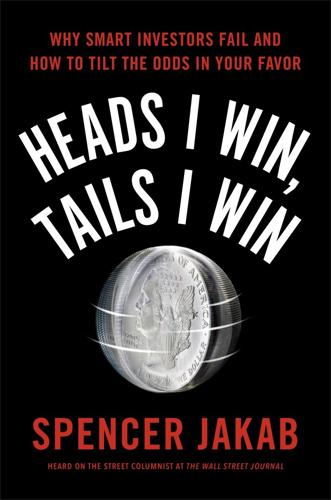
Heads I Win, Tails I Win
by
Spencer Jakab
Published 21 Jun 2016
Can we do even better at predicting the future? Probably, though one high-profile attempt was denounced as “useless, offensive, and unbelievably stupid.”10 The idea that prompted such strong words—from a U.S. senator no less—was a pilot project within the Pentagon in the early years of the war on terror to set up a futures market for geopolitical risk. Real-money bettors would have been able to wager on the possibility of, say, Jordan’s King Abdullah being assassinated by a certain date or a North Korean nuclear missile strike on U.S. soil. You can just imagine the trading pit banter: “I’ll take five hundred contracts at the close on L.A. getting smoked . . .”
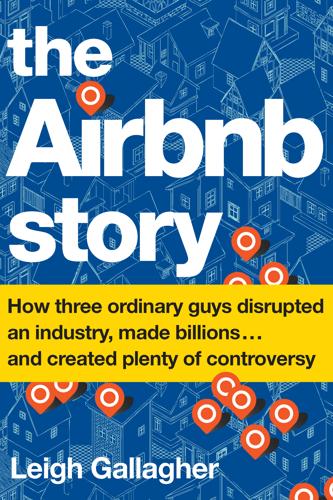
The Airbnb Story: How Three Ordinary Guys Disrupted an Industry, Made Billions...and Created Plenty of Controversy
by
Leigh Gallagher
Published 14 Feb 2017
The gradual decline of trust in societal institutions over the years, meanwhile, from business to government, accelerated in the wake of the Great Recession, making people more receptive to a “fringe” idea than they might otherwise have been (see Bernie Sanders and President Donald Trump). Add on a growing sense of unease over geopolitical risk and the sense that horrible and unpredictable things are happening in the world, and the urge to connect with others becomes an unarticulated desire in all of us. Whatever you think about “belonging,” these forces really were a large part of what made people more open to trying this new, quirky, affordable travel experience.
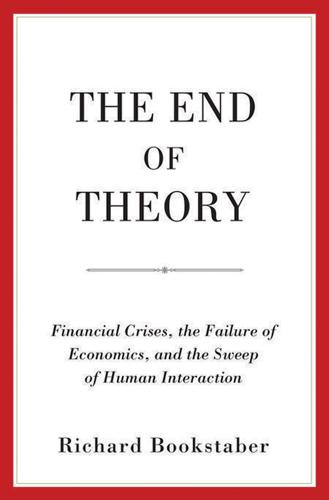
The End of Theory: Financial Crises, the Failure of Economics, and the Sweep of Human Interaction
by
Richard Bookstaber
Published 1 May 2017
There are emerging risks emanating from the fracturing of petrostates as the world attempts to decrease its dependence on oil. China is a new power in the financial markets, with regional territorial ambitions. In all of this, we are seeing not only pathways for financial vulnerability and crisis but also the multiplying effect of a growing link between financial and geopolitical risks. This time—every time—it really is different. We are not stepping into a smooth, equilibrium sort of world where the agents and institutions will behave the same way in the future as they have in the past, or even where the agents in our financial system will be those of the past. We have had one hundred fifty years of neoclassical economics.

I Will Teach You To Be Rich
by
Sethi, Ramit
Published 22 Mar 2009
But instead of accepting these simple truths and acting on them, we discuss trans fats, diet pills, and Atkins versus South Beach. WHY ARE MONEY AND FOOD SO SIMILAR? Most of us fall into one of two camps as regards our money: We either ignore it and feel guilty, or we obsess over financial details by arguing interest rates and geopolitical risks without taking action. Both options yield the same results—none. The truth is that the vast majority of young people don’t need a financial adviser to help them get rich. We need to set up accounts at a reliable no-fee bank and then automate savings and bill payment. We need to know about a few things to invest in, and then we need to let our money grow for thirty years.

The Age of Stagnation: Why Perpetual Growth Is Unattainable and the Global Economy Is in Peril
by
Satyajit Das
Published 9 Feb 2016
Lower commodity prices, currency devaluations, competition, industrial overcapacity, and changes in technology and business models are creating deflationary pressures globally. Low economic growth rates and low inflation would not normally be an issue, helping resolve other pressing problems, such as carbon emissions and the availability of food and energy. But low growth, low inflation, and high levels of debt are incompatible. Geopolitical risks are rising, threatening to reverse the peace dividend that followed the end of the Cold War. In 2014, journalist Roger Cohen called it the “great unraveling,” a term that captures the increasing political powerlessness, absence of control, and difficulty in predicting the locus and evolution of current and future crises.

The End of Accounting and the Path Forward for Investors and Managers (Wiley Finance)
by
Feng Gu
Published 26 Jun 2016
Are the resource disposals (sales) strategic, or Strategic Resources & Consequences Report: Case No. 4 185 aimed at boosting short-term earnings (capital gains from sales) and cash flows, or—worse yet—funding share buybacks? Do the shifts from gas to oil, or vice versa, make sense (and what about unconventional resources)? At the end of the day, did the portfolio shifts enhance total proved reserves? And what was the impact of the shifts on the company’s geopolitical risk exposure (more or less exposure in Russia, say)? Only with answers in hand can you then decide whether you are comfortable holding equity in an enterprise with such a geographical resource portfolio mix and risk exposure. Furthermore, does this enterprise diversify other oil and gas investments you have, or just mimic them?

The Dawn of Eurasia: On the Trail of the New World Order
by
Bruno Macaes
Published 25 Jan 2018
It carries huge risks, upsetting old geopolitical realities and evoking a nineteenth-century world of great-power rivalry, a race for power at the heart of the greatest landmass on earth. Start with logistics and you will quickly find yourself addressing much more delicate issues. Even in its incipient form the project is creating considerable geopolitical risks. In late 2016 the founder of the military security company Blackwater, associated with the American invasion of Iraq, announced his new company would be establishing an operation base in Xinjiang to support the Belt and Road in Pakistan, Kazakhstan, Uzbekistan and Afghanistan. In Kazakhstan the project has raised fears of increased Chinese presence, and these fears sparked public protests which are throwing doubts over the stability of the Nazarbayev regime.
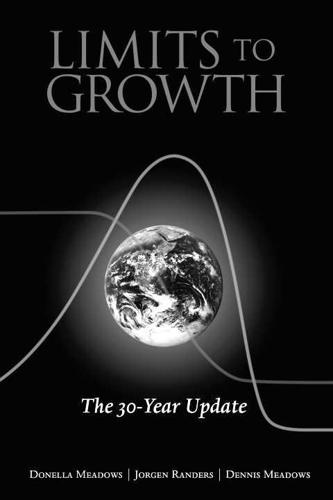
The Limits to Growth: The 30-Year Update
by
Donella H. Meadows
,
Jørgen Randers
and
Dennis L. Meadows
Published 15 Apr 2004
In 1997 a group of at least 2000 economists, including 6 Nobel laureates issued a declaration: The balance of evidence suggests a discernible human influence on global climate. As economists, we believe that global climate change carries with it significant environmental, economic, social, and geopolitical risks, and that preventive steps are justified.91 FIGURE 3-23 Global Greenhouse Gas Concentrations Carbon dioxide, methane, nitrous oxide, and chlorofluorocarbons all reduce emissions of heat from the earth to outer space, thus increasing the temperature of the earth. The atmospheric concentration of these gases-except for CFCs, which were first synthesized in the mid-1900s-has been increasing since the 1800s.
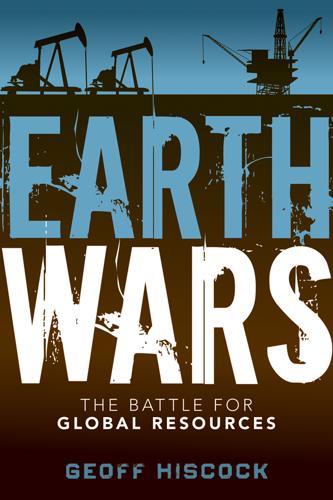
Earth Wars: The Battle for Global Resources
by
Geoff Hiscock
Published 23 Apr 2012
Now comes the hard stuff—the offshore drillers with their attendant dangers in the Gulf of Mexico (see BP’s Deepwater Horizon disaster in 2010), the sheer climatic challenge of the Arctic waters above Russia, the environmental hazards of Canada’s Athabasca tar sands, the ultra-deep and ultra-long-range technology Brazil must master to tap its “pre-salt” bounty hundreds of kilometres offshore in the South Atlantic Ocean, the upgrades needed to get Iraqi oil flowing freely again, the geopolitical risks that have to be weighed for existing and new ventures in Africa, the Middle East, Central Asia, and beyond—not to mention the clashes that may intensify when Vietnam, China, Japan, the Philippines, Indonesia, and Malaysia cross paths as they probe the oil and gas riches of the South China and East China Seas.
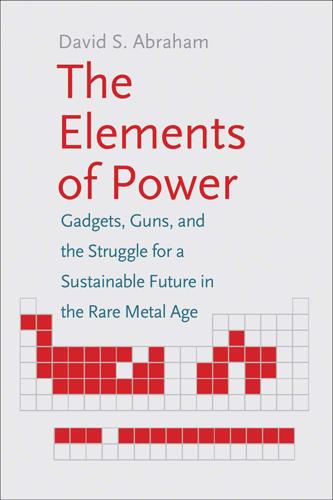
The Elements of Power: Gadgets, Guns, and the Struggle for a Sustainable Future in the Rare Metal Age
by
David S. Abraham
Published 27 Oct 2015
They fear a repeat of the rare earth price shock in 2010, specifically that geopolitics will reduce market supply or drastically increase the price of a material.15 What concerns Silver is that companies are spending vast sums of money to switch away from reliable metals to untested alternatives that appear to face less geopolitical risk. Silver calls this decision to use a less-than-best option because of fears over geopolitics, “innovation distortion.” And these geopolitical, not geological or manufacturing, considerations are leading companies to develop second-best technologies. Switching material to shore up your supply chain may make sense in some cases, but it provides the space for companies that don’t share your supply chain concerns to develop better products because they continue to use the known rare metals.

The Future of Money
by
Bernard Lietaer
Published 28 Apr 2013
' · In a separate initiative, a global meeting of 2,800 economists, including Nobel Prize winners James Tobin and John Harsanyi, unanimously agreed on the following opinion: 'Global climate change is a real and pressing danger', carrying with it significant environmental, economic, social and geopolitical risks. All these exhortations invariably seem to hit a brick wall wherever serious financial interests are involved. Financial markets focus on the; next quarter's results, and even if a particular CEO were to advocate longer-term priorities at the expense of immediate results, he or she would be ruthlessly punished or even removed from office.
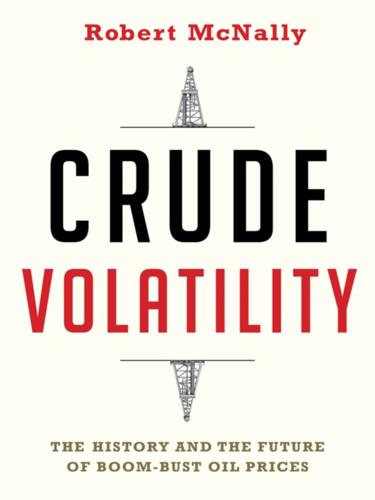
Crude Volatility: The History and the Future of Boom-Bust Oil Prices
by
Robert McNally
Published 17 Jan 2017
Downstream, figures for production, storage, net trade, and refining stocks and flows should be comprehensively reported, enabling much better implied demand estimates. Build Up Strategic Stocks and Coordinate Their Use in Emergencies Given continued tight OPEC spare production capacity and the many geopolitical risks in key oil producing countries and regions, oil importing countries should bolster defenses against price shocks that could be transmitted by severe supply interruptions. They can do so by increasing strategic stocks and coordinating their use with others in cases of disruption. Congress may wish to reconsider selling off strategic stocks and instead bolster them.
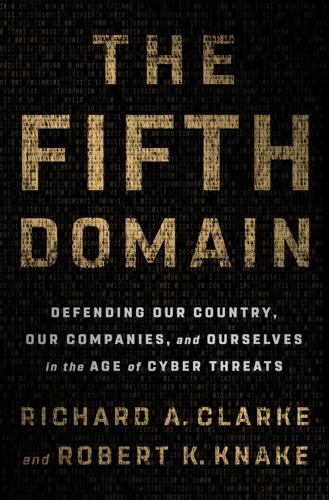
The Fifth Domain: Defending Our Country, Our Companies, and Ourselves in the Age of Cyber Threats
by
Richard A. Clarke
and
Robert K. Knake
Published 15 Jul 2019
Before the trail leads to Tehran, it probably winds its way through servers in at least one other country (after all, Iran does not do much business with the United States). Maybe it leads to computers in our once and future allies Germany and France. Maybe it leads to a server in our sometimes adversary China. Either way, following that trail comes with a boatload of geopolitical risks. Dropping a “cyber bomb” on those servers is not a viable response, at least in the near term. If the legal and diplomatic questions can be worked out, maybe, just maybe, the counter-cyber team can follow it all the way to the laptop resting on the knees of the Iranian hacker. Now what?
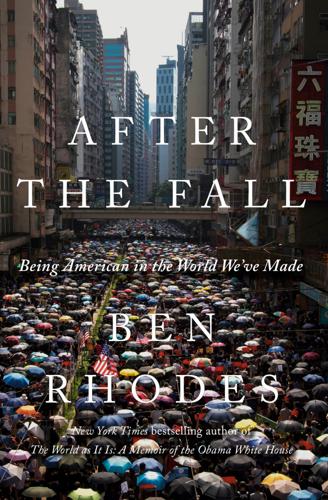
After the Fall: Being American in the World We've Made
by
Ben Rhodes
Published 1 Jun 2021
I had never before considered the subjects I was talking about from the perspective of making a profit, and I was struck by how obviously that shifted your perspective. Up above the city, you no longer felt you were in a nation-state; instead, you were in the globalized community of capital markets. Men and women of different nationalities looking for some germ of knowledge that could allow them to make a bet on something—currencies, companies, geopolitical risk—that would pay off. The latest technologies were readily available, the video links more pristine than those that used to connect me with a global community of diplomats and military officers from the White House Situation Room. There was a seemingly limitless supply of bottled water, coffee, and tea.
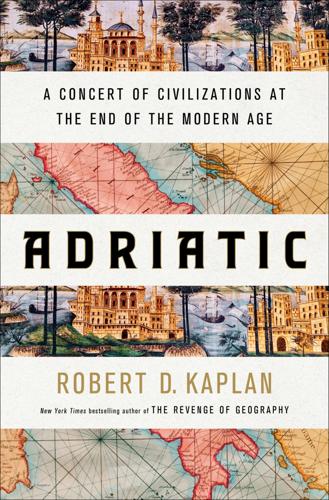
Adriatic: A Concert of Civilizations at the End of the Modern Age
by
Robert D. Kaplan
Published 11 Apr 2022
In such a circumstance, the declining power of Brussels leaves countries in the eastern half of the continent more vulnerable to Moscow. So rather than listen to the platitudes and clichés of big shots at conferences in Munich and Davos, where everyone is performing for an audience, I would rather have one-on-one conversations at café tables in Ljubljana, closer to the borders of the Near East and Orthodox worlds, where geopolitical risk is more immediate, less abstract. Ljubljana: known in German as Laibach, a place more historically associated with the Habsburg Empire than with any particular nation-state. Here in 1821, one of the crucial congresses was held to stabilize Europe after the Napoleonic Wars. Thus, in the very sound of its name Laibach recalls such personages as Metternich and Castlereagh.

Careless People: A Cautionary Tale of Power, Greed, and Lost Idealism
by
Sarah Wynn-Williams
Published 11 Mar 2025
If you take credit for the Arab Spring, if you take credit for a people’s revolution, China will be less likely to allow Facebook back into China.” “I think we’re just looking at this from the media interest here in the US.” I seize the moment to push again for her to create a role looking at global strategy, across all the regions, that assesses geopolitical risk so Facebook doesn’t make these types of decisions in isolation. She quickly dismisses the idea but, almost as an afterthought, throws me a bone by saying they’ve opened a communications role in Australia that will do some policy work, as Facebook’s under a lot of political pressure there because “somehow the worst of the internet ends up on Facebook Australia.”
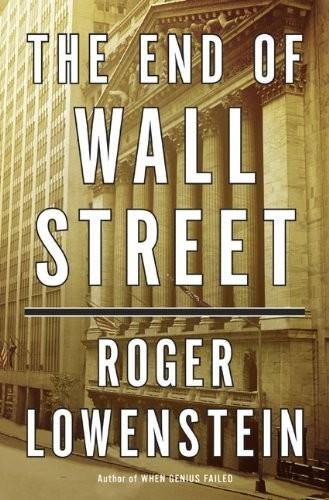
The End of Wall Street
by
Roger Lowenstein
Published 15 Jan 2010
Rubin’s adjoining letter was even skimpier on detail. He focused on the outlook for the world economy, which he described as being in the midst of “transformative change.” Such high-flown phrases abounded. He declared the global economy to be “strong . . . despite serious financial imbalances, geopolitical risks, and multiple other issues.”2 However, Rubin did not burden his readers by enumerating what those “issues” might be. Substantively, the letter was weightless. Patronizing as they were, the Citigroup letters were highly (if unintentionally) revealing. The stewards of America’s largest bank waxed optimistic about Citi’s prospects, but paid no attention to the individual business lines, much less to the emerging stresses to those businesses.
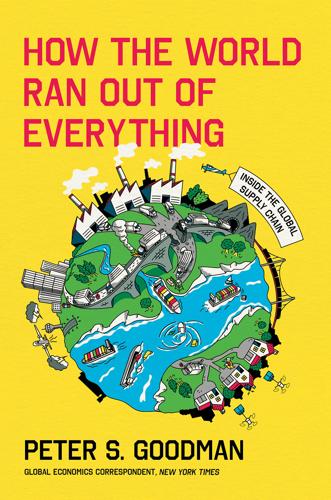
How the World Ran Out of Everything
by
Peter S. Goodman
Published 11 Jun 2024
Chipmakers had shifted their production from the United States decades earlier, leaping the Pacific to Japan, South Korea, and Taiwan, in large part as a way for major users of chips like Apple to limit their inventory while tapping lower-cost suppliers. With shortages now laying waste to balance sheets and concerns about the geopolitical risks weighing on Taiwan, Intel, the American computer chipmaker, had outlined plans to spend some $20 billion to erect new factories in Arizona. But why had the company waited so long? At least part of the answer could be found in the $26 billion that Intel had spent buying back its shares in the two years before the pandemic—money that might have been devoted to expanding its capacity.

Super Continent: The Logic of Eurasian Integration
by
Kent E. Calder
Published 28 Apr 2019
See also Funan Cameron, David, 178 Caravanserai Project, 42 Carbon dioxide emissions, 120, 198 –199 Cargo flights, 181 Carter, Jimmy, 137, 239 Central Asian trade, expansion of, 57–59, 58t Central Asia plus Japan Dialogue, 39 –40 Central Asia Regional Economic Cooperation (CAREC) Institute, 94, 272n86 Chabahar port (Iran), and India, 13, 61, 74, 76m, 258 –259n17 “Checkbook diplomacy,” 20 Cheng Li, 240 China, demographics: one-child policy, 190, 294n15; population, 11, 20, 186, 190 China, domestic politics: ethno-religious conflicts, 188, 194 –195; interest groups, 110 –111; leadership, 11, 115 –117; nationalism, 186 China, economy: in comparative context, 1–4, 86 – 87, 101–102, 149 –150; “continental drift,” 14m, 92; export-oriented industrialization, 102 –103; government debt, 105, 186; “Made in China 2025,” 104 –105; overcapacity, 108-110; real estate bubble, 186 –187; western development, 115-116. See also Four Modernizations; Special Economic Zones (SEZs); stateowned enterprises (SOEs) China, energy: coal, 83, 198; gas, 82 – 83; geopolitical risks, 74, 127, 128-129; oil, 81– 82, 119; pipelines, 34, 57, 58 –59, 78 – 81, 83 – 84, 135, 144 –145, 153, 193; pollution, 198 –199; renewables, 84 China, and Eurasia: continentalism, 42 –46; economic complementarity, 172 –175; impact of the Four Modernizations on, 117–120; impact of the collapse of the Soviet Union on, 56-59; impact of the Global Financial Crisis on, 170 –171; national champions, 111–114.

Connectography: Mapping the Future of Global Civilization
by
Parag Khanna
Published 18 Apr 2016
For years, the extraction and processing of rare earth minerals was controlled by a small number of mostly state-owned companies in China—allowing them to rattle the entire electronics supply chain when China temporarily banned the export of rare earth minerals in 2011. But as with the oil shocks of the 1970s, geopolitical risk has spurred the United States, Canada, India, Kazakhstan, and Australia to invest in excavating new supplies.9 Just as distributed energy supplies and alternative and renewable energy technologies have ended OPEC’s grip on oil prices, it is better to have diverse mineral suppliers as well. The even more interesting story, however, is not of material competition but of substitution.
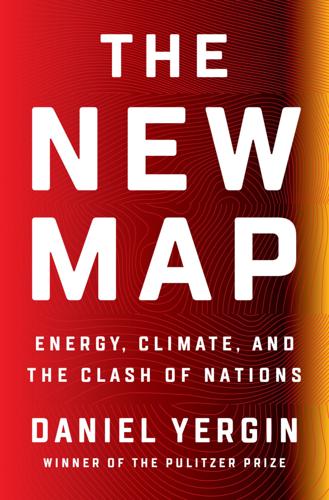
The New Map: Energy, Climate, and the Clash of Nations
by
Daniel Yergin
Published 14 Sep 2020
Oil, and more recently natural gas, will obviously remain central to the future of the Middle East—its economic prospects, the rivalries for regional predominance, governance, demographics, stability, and the region’s relations with the rest of the world. Yet, ironically, this very centrality—and dependence—creates an imperative to make oil and gas less central for the future of the region. * * * — While the perennial and sometimes unexpected geopolitical risks affecting oil will remain, they will be tempered by several factors. Even if the number of vehicles so far is small, the emergence of electricity as a competitor in transportation and the possibility of Auto-Tech provide an alternative to oil-based transportation and the unchallenged dominance of oil.

The Achilles Trap: Saddam Hussein, the C.I.A., and the Origins of America's Invasion of Iraq
by
Steve Coll
Published 27 Feb 2024
Or the U.S. could continue to isolate Baghdad through coercive sanctions and monitoring, as Clinton had done. The alternative—apart from giving up altogether—would be to order the U.S. military to invade Iraq and depose Saddam, an operation that would require at least tens of thousands of troops. It would also entail incalculable geopolitical risks, huge expense, and possibly heavy casualties. In August 2001, inside the Iraq Operations Group—and in prosperous, peaceful America at large—it was hard to imagine how such an invasion would come about. Part Three Blind Man’s Bluff September 2001 to March 2003 Twenty-Three The Pundit On the morning of September 11, Mohammed Aldouri arrived early to the sandstone townhouse on East Seventy-Ninth Street that housed Iraq’s Permanent Mission to the United Nations in New York.
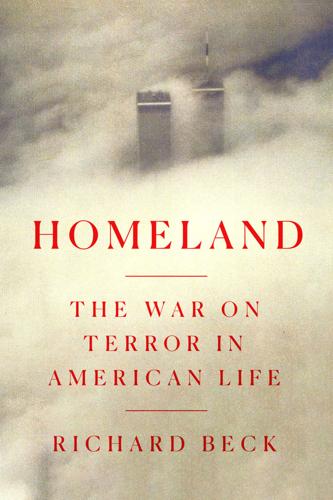
Homeland: The War on Terror in American Life
by
Richard Beck
Published 2 Sep 2024
The invasion was a bonanza for defense companies, but Iraq was supposed to be a brief war. Bush declared that combat operations had ended less than two months after the bombs started falling, and Bremer made it clear upon his arrival that he thought America would be out of the country entirely within two years. A superpower like the United States does not take a geopolitical risk like toppling Saddam Hussein just so it can spoon-feed six months’ worth of high profits to a handful of defense companies that make up less than 3 percent of the S&P 500’s market capitalization. But you can learn a lot from your own dreams even when they don’t come true. Bremer did not successfully remake Iraq’s economy during his year abroad, and by 2006 the United States had abandoned its utopian dreams for the country’s economic future, focusing instead on managing violence and containing the regional fallout from America’s occupation.
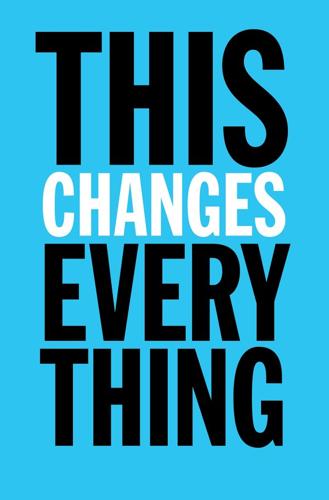
This Changes Everything: Capitalism vs. The Climate
by
Naomi Klein
Published 15 Sep 2014
Fred, 42 Sinner, George, 312 Sitkalidak Island, 332 sixties-era dropouts, 403, 404 Skates, Chris, 53n Skocpol, Theda, 229 Skouries forest (Greece), mining project in, 293–94, 296–98, 303, 314, 342, 347, 445 Slate, 263 slavery, slaves, 154, 177 compensation paid to owners of, 415–16, 457 economic case against, 462 economic impact of, 415–16, 455–57 reparations for, 414–15 see also abolition movement Slett, Marilyn, 340 Slottje, Helen, 361 smart energy grids, 108 Smart Growth America, 126 Smith, Adam, 173, 462 Smith, Brendan, 401, 402 smog, 176 social democracy, 132, 179 socialism, 38, 40, 75, 159, 177, 184, 210n authoritarian, 44, 178–79 centralization under, 179 Chávez’s “Twenty-first Century,” 182 extractivism and, 178 5-year plans under, 133 social isolation, 105 social justice, 36, 59, 61, 117 social media, in Blockadia movement, 303, 466 social movements, 83, 121, 124, 177, 204–5, 450, 453–57, 459–61, 463–64 social programs, 10, 119 cuts in, 8 Social Security, 454 social spending, cuts in, 8 Society of Petroleum Engineers, 193 Solangi, Moby, 432–33 solar heaters, 393–96 solar panels, solar arrays, 70, 122, 131, 132, 142, 223, 237, 287, 402 global oversupply of, 66n rooftop, 100 trade restrictions on manufacturers of, 65–69 Solar Pathfinder, 393 solar power, 24, 25, 72, 97, 102, 110, 118, 124, 127, 131, 147, 156, 215, 237, 395, 396 in combined-cycle plant, 129 fracking’s negative impact on, 129, 144 in Ontario, 67–68 private sector and, 100–101 Solar Radiation Management (SRM), 257–61, 277, 282 computer models of, 270–71 Governance Initiative (SRMGI) for, 263 historical record as predictive tool in, 271–75 “proof of harmlessness” argument in, 271, 272 unequal geopolitical risk in, 269, 275–76, 287 untestability of, 269–70 see also Pinatubo Option solastalgia, 165 Solazyme, 240 solidarity, 62–63 Solnit, Rebecca, 62–63 Solomon, Ilana, 86, 359 Solón, Pablo, 18 Sompeta, India, 350 Soon, Willie, 33 South Africa, 11, 127, 412 apartheid in, 454–55 fracking in, 347, 348 South Asia, 13 Pinatubo eruption and, 272 Southeast Asia, 14 South Korea, 81, 82 South Pacific, 162 Soviet Union, 75, 178 collapse of, 88, 178 see also Russia space mirrors, 258 Spaceship Earth, 286 Spain, 132, 225 opposition movement in, 9 renewables subsidies cut in, 110 Spatharidou, Dimitra, 132 Spencer, Baldwin, 415 Speth, Gus, 120, 205 Standard & Poor’s, 367–69, 383 Stanford University, 101, 102, 137, 214, 354 Starbucks, 49 starfish, 27–28 “Star Wars” missile defense system, 268n State Department, U.S., Keystone XL and, 140, 375 Statoil, 130, 179, 198, 246 steam power, 171–74, 266, 410 steamships, 175 Steinberger, Julia, 124 Steingraber, Sandra, 214, 317, 335, 427 Stephen, Marcus, 168 Stern, Nicholas, 88 Stern Review on the Economics of Climate Change, 70 Steshia Hubert, Nerida-Ann, 161, 162, 164 stewardship, 169, 383, 444–45 Steyer, Tom, 49, 234–35 Stiglitz, Joseph, 72 stimulus program, 121–22, 124 green initiatives in, 124 Stockholm, 179, 202 Stockholm Environment Institute, 417–18, 465 Stockholm International Peace Research Institute, 114 Stockman, Steve, 161 stock market crash of 1929, 10 Stone, Ed, 449 Stone, I.

The Quest: Energy, Security, and the Remaking of the Modern World
by
Daniel Yergin
Published 14 May 2011
“To have one really good upstream asset,” Noto said, “you have to have six projects in the frying pan to bring experience, money, and talent to bear.” Moreover, Mobil’s new growth projects were in Nigeria, Kazakhstan, and Qatar, as well as Indonesia, meaning that the company’s future prospects would be susceptible to geopolitical risks of one kind or another. Qatar’s vast offshore natural gas field, at the northern end of the Persian Gulf, would be a particular challenge. Because of the field’s immense size, the investment bill would be enormous. “The more we learned about Qatar,” said Noto, “the more we realized that it would be beyond the capacity of a single company.”

The Prize: The Epic Quest for Oil, Money & Power
by
Daniel Yergin
Published 23 Dec 2008
In June 1982 Israel intervened directly in Lebanon. At one meeting of the Organization of Arab Petroleum Exporting Countries, there was some discussion of instituting another embargo against the United States as "punishment." But the distressed condition of the oil market, combined with the immediate geopolitical risks for the Gulf exporters from Iran, was such as to make it an incredible proposal, and one that was quickly scotched as irrelevant, dangerous, and likely to be highly damaging to the interests of the exporters. Meanwhile, in June 1982, King Khalid of Saudi Arabia, an interim figure who had suffered from chronic heart disease, died.